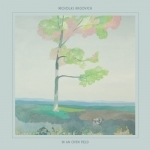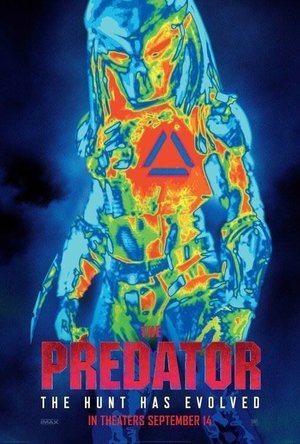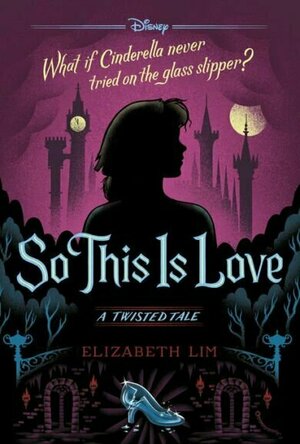
Miniatlas Dentistry
Medical and Health & Fitness
App
The Miniatlas Dentistry is the perfect pocket tool for physicians. With just a few taps on their...

DocsApp - Consult a Doctor
Medical and Health & Fitness
App
1. Ask your health question 2. Get a doctor allotted to you 3. Give your details, upload diagnostic...

In An Open Field by Nicholas Krgovich
Album Watch
This record could just as easily be called "In A Sunny South Pasadena Living Room" or "In A...
pop

Wealth & Abundance Meditation with Peggy McColl
Lifestyle and Education
App
Have you tried and tried get that "Law of Attraction" thing to work for you but all you've managed...
Emma @ The Movies (1786 KP) rated Freaky (2021) in Movies
Apr 24, 2021
Millie's high school life is derailed when she switches places with a serial killer called The Butcher. She has 24 hours to work out how to switch back or she'll be trapped as a wanted criminal for the rest of her life.
This one... surprised me. I was hoping for an average slasher sort of film, all killer bit of filler, but I actually quite enjoyed the ride on Freaky.
Body swapping isn't a new idea, Big did it, 13 Going On 30, Chucky... sort of. It's a comforting sort of base that gives you room for fun, and in this instance, serial killer and teenage girl was a pretty good combo.
One thing to beware of is that this film is very gory. The beginning starts off as your typical teen horror and moves into the slasher part quite quickly. It's over the top in that ridiculous way that takes away some of the horror factor, and that's how I like these sorts of movies.
When it comes to the acting we get a collection of typical teens, there was nothing that seemed out of place. Solid acting to the expected stereotypes and it absolutely didn't rock the boat.
Vince Vaughn as our menacing murderer was quite terrifying for the moments we saw him in that role. But of course he spent most of the film as Millie. On this point my brain automatically went to the Jack Black comparison in the Jumanji films. His rendition of a teenage girl was great, and Vaughn's was just okay. While both of these roles were over the top, Vaughn's performance was "almost but not quite" and didn't sit right in Freaky.
The flip side of this was Kathryn Newton as Millie. As actual Millie I can't really remember anything about the performance, but as The Butcher there was a definite nutter vibe terminating from her. I'm not sure how they worked on the characters, for Newton the only real guidance was "psycho killer", and I think that left room for a little leeway on this side of the swap.
I was pleased that they took things into consideration during the swap. The struggle of adapting to the bodies was clear and continually there, it wasn't forgotten for the sake of getting on with the story. Millie possessed by The Butcher has a great interaction with another character, and this point is a big focus and heavy on the anxiety to watch because you're caught between a rock and a hard place about what you want the outcome to be.
There is one part of the movie that really weirded me out, I'm sure you'll be able to identify it too so I won't spoil it here. But it didn't feel necessary, it achieved nothing, and felt like it was inserted to get a reaction out of the viewer... exactly as it has here.
Freaky has a good balance between thriller, horror and comedy, and despite the imbalance in the acting/characters I found it to be a great watch. The foreknowledge of the general outcome of a body swap film (because let's face it, we all know how they end) leaves you the time to enjoy the nuttiness of everything else.
Originally posted on: https://emmaatthemovies.blogspot.com/2021/04/freaky-movie-review.html
Emma @ The Movies (1786 KP) rated The Predator (2018) in Movies
Sep 25, 2019
There's just something about "seeing" The Predator when he's invisible that really hits the spot. It gets you on the edge of the seat and fills you with just the right sort of anxiety. Had someone tapped me on the shoulder during the first time that happened in the film I probably would have swung for them while wailing like a banshee.
Lots of actors that you'd recognise from other things and everyone has their own little quirk that works well together in the scenes. It didn't feel like any of the talent was underused, which can be an issue with people in bit parts.
Who knew that Predators had a sense of humour too?! I don't think I've ever seen anyone use a severed limb in such an ingenious way before.
One bit that I really enjoyed reminded me of Futurama. You win bonus nerdy points if you spot it too. It had me tittering away.
There are excellent characters. Genuinely can't think of any that I didn't like in some way. Rory is brilliant in this, great acting from Tremblay and he was blessed with some amazing lines. His grasp of reverse psychology had us all laughing. There's also a scene in the military facility where the Predator wakes up and I actually believed the way everyone reacted. So often it's a mass of crazed running in all directions or everyone is running for one door, but this one felt like a perfectly choreographed event. We see incredible friendships and camaraderie that really comes to the forefront in the conclusion of the film.
It seems a bit redundant to be saying this because you'd think people would know... but they don't seem to... Military weapon designers: tactical weapons that are made for covert ops and have LED lights on them are in fact not very tactical. Predators: If you just stopped playing with your prey you could have conquered the Earth years ago.
*exhales slowly* So this 3D thing... I really and truly hate space shots in 3D, especially the ones that are basically just black space and stars. Really difficult to look at. Thankfully that didn't last for too long and was replaced what was quite good effects of the spaceship jumping to Earth. There were also a few shots from the sniper perspective that worked well. The rest of the film I found that it went quite badly from fuzzy to sharp and I couldn't quite tell what was supposed to be the focus. I'd have said that was the screen's 3D rather than the film itself, but it still struck me as odd that it was going between the two. I will put it down to just a bad screening.
What should you do?
You should see this, probably in 2D rather than 3D. It's funny, full of action and just the right amount of nostalgia.
Movie thing you wish you could take home
Part of me wants the translation device. Part of me wants the invisibility ball (but not afterwards). Part of me wants that tranq gun. The opinion will change depending on how my day goes.

Good Sleep!
Health & Fitness
App
■ 'Good Sleep!' is recommended by top U.S.-licensed doctors on HealthTap. 'Good Sleep' was...

Eat This Much - Meal Planner
Health & Fitness and Food & Drink
App
Put your diet on autopilot with Eat This Much. Tell us your diet goals, the foods you like, your...

Period Tracker Deluxe
Health & Fitness and Lifestyle
App
Period Tracker, the easiest way to track your health! *Now supports HealthKit, 3DTouch, TouchID,...
Lottie disney bookworm (1056 KP) rated So This is Love in Books
May 16, 2020
‘So This is Love’ is the latest in the Disney Twisted Tale series and has been eagerly awaited by yours truly. The latest novel, by Elizabeth Lim (who also wrote the Mulan inspired tale ‘Reflection’) explores what would happen to the classic Cinderella tale if Cinders did not try on the glass slipper for the Grand Duke and scamper off towards her happily ever after. How would Cinderella fare if a dramatic stand off resulted in the remaining slipper shattering into a million pieces?
However, it is not, as you may suspect, Lady Tremaine who smashes the second glass slipper but Cinders herself. Lim’s Cinderella has her head firmly on her shoulders and is all too aware what the power of possessing this shoe may mean to herself, the Prince and the kingdom if it fell into the greedy hands of her relatives. Thus, in an act of bravery, she destroys her ticket to a happily ever after and faces the wrath of her stepmother in the process.
This is the first point in the twisted tale where we see a completely different Cinderella than we have ever seen before. After a dramatic turn of events Cinderella leaves her family home for good and finds herself at risk of a life living on the streets. However, Elizabeth Lim has not abandoned all aspects of a fairy tale: a chance encounter and a new friend present Cinders with the opportunity to find work within the palace where she once danced the night away.
In my opinion, the traditional Cinderella would go running straight to the Prince, explain her story, rely on her beautiful face and live happily ever after. Thankfully for the realists amongst us, our twisted tale Cinderella agonises over the possibility that the Prince is more in love with the idea of the “runaway princess”: she decides that their relationship would never work and that she should focus on her career and creating an independent life for herself.
This was such a refreshing character trait: I loved the fact that, although Elizabeth Lim did not change the time period of the novel, she modernised the main character into a young woman who does not need rescuing. Quite the opposite, as Cinderella soon finds herself witnessing corruption within the palace: can this Disney Princess become a hero and save the kingdom?
Lim’s Cinderella is truly a modern role model: she is resilient, sometimes stubborn but altogether kind and most importantly, she faces her fears despite overwhelming periods of anxiety in some of the most emotive and beautifully written pieces I have read in a long time.
In an Instagram post to Elizabeth Lim (@elimpix) I told her that this Cinderella is the version I would prefer my boys to chase after. However, on reflection that isn’t true. This Cinderella doesn’t deserve to be chased and hunted down in order to fit into a pretty shoe. This Cinderella is a partner in every aspect: working for the good of the kingdom and a ruler in her own right. This is the Cinderella I would want my boys to be worthy of.


